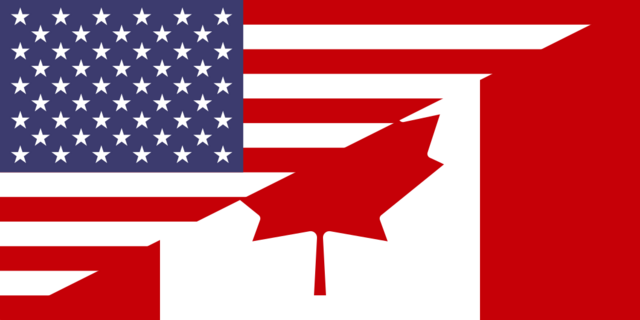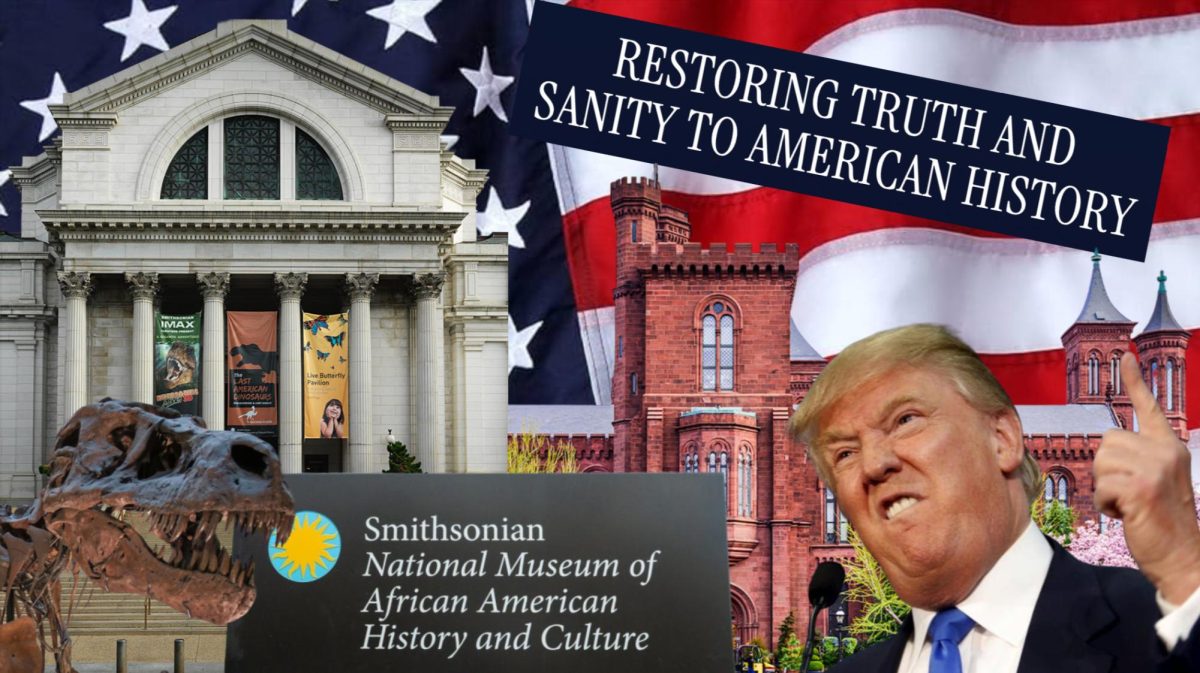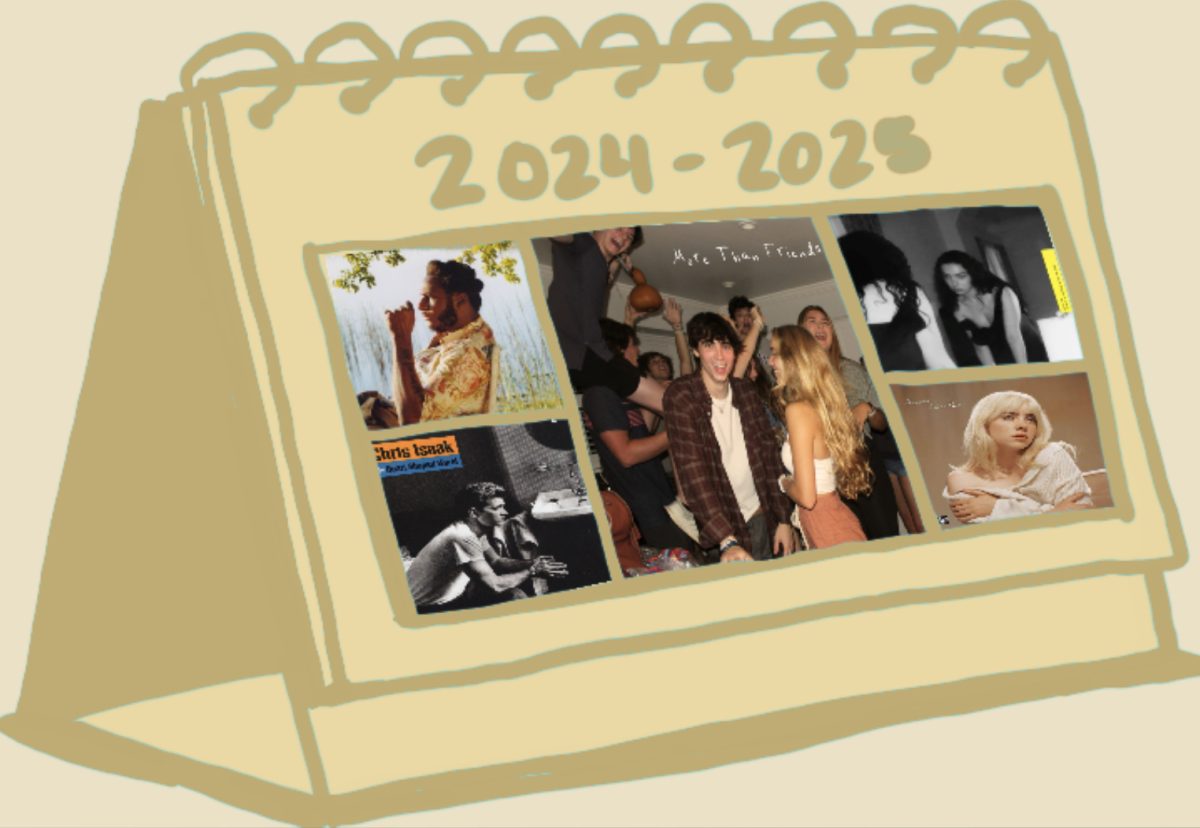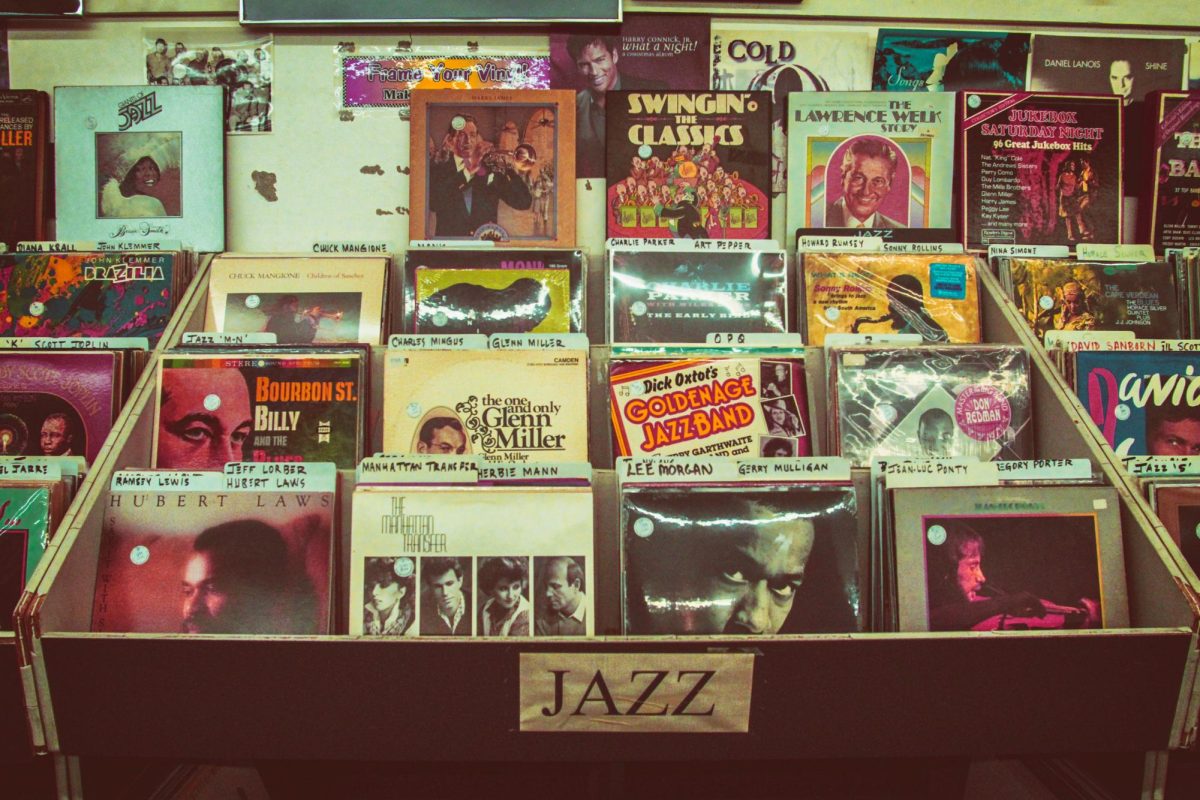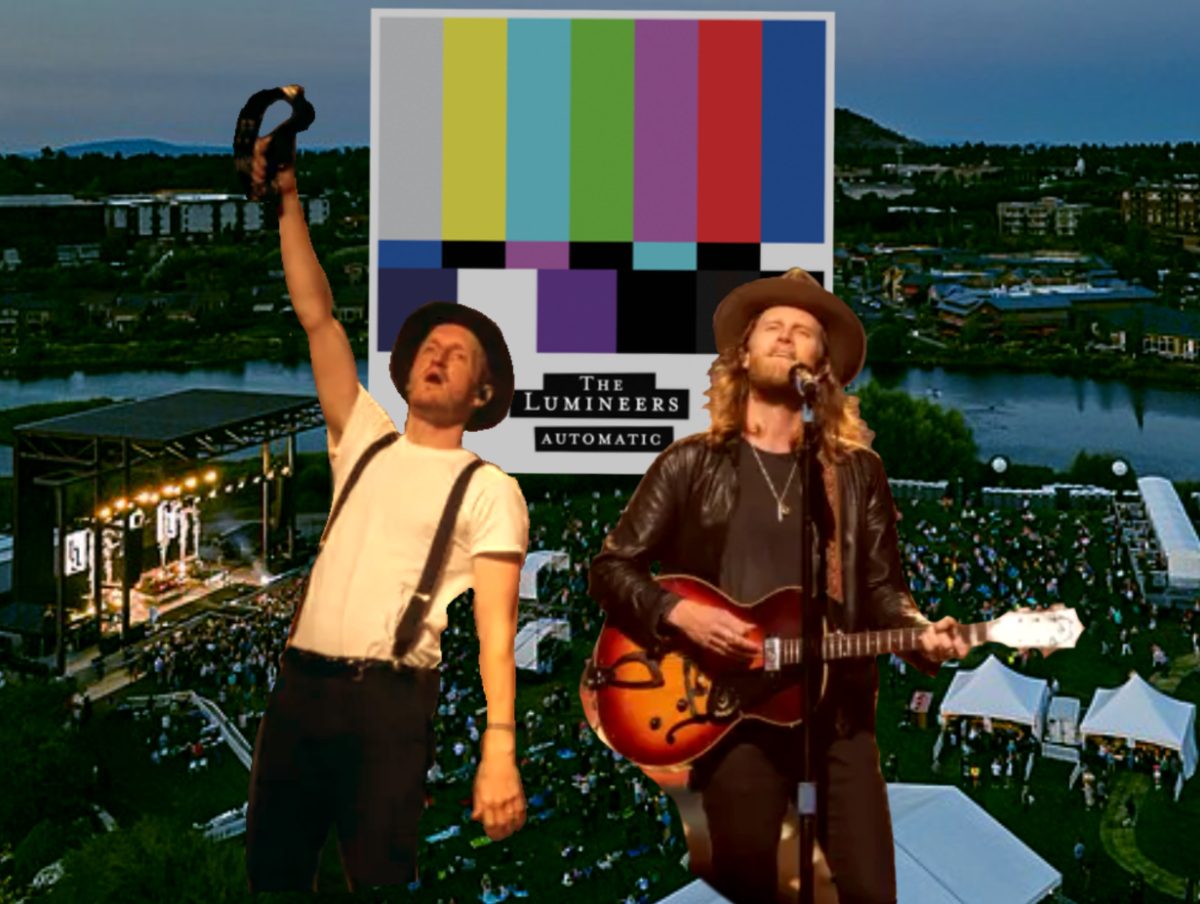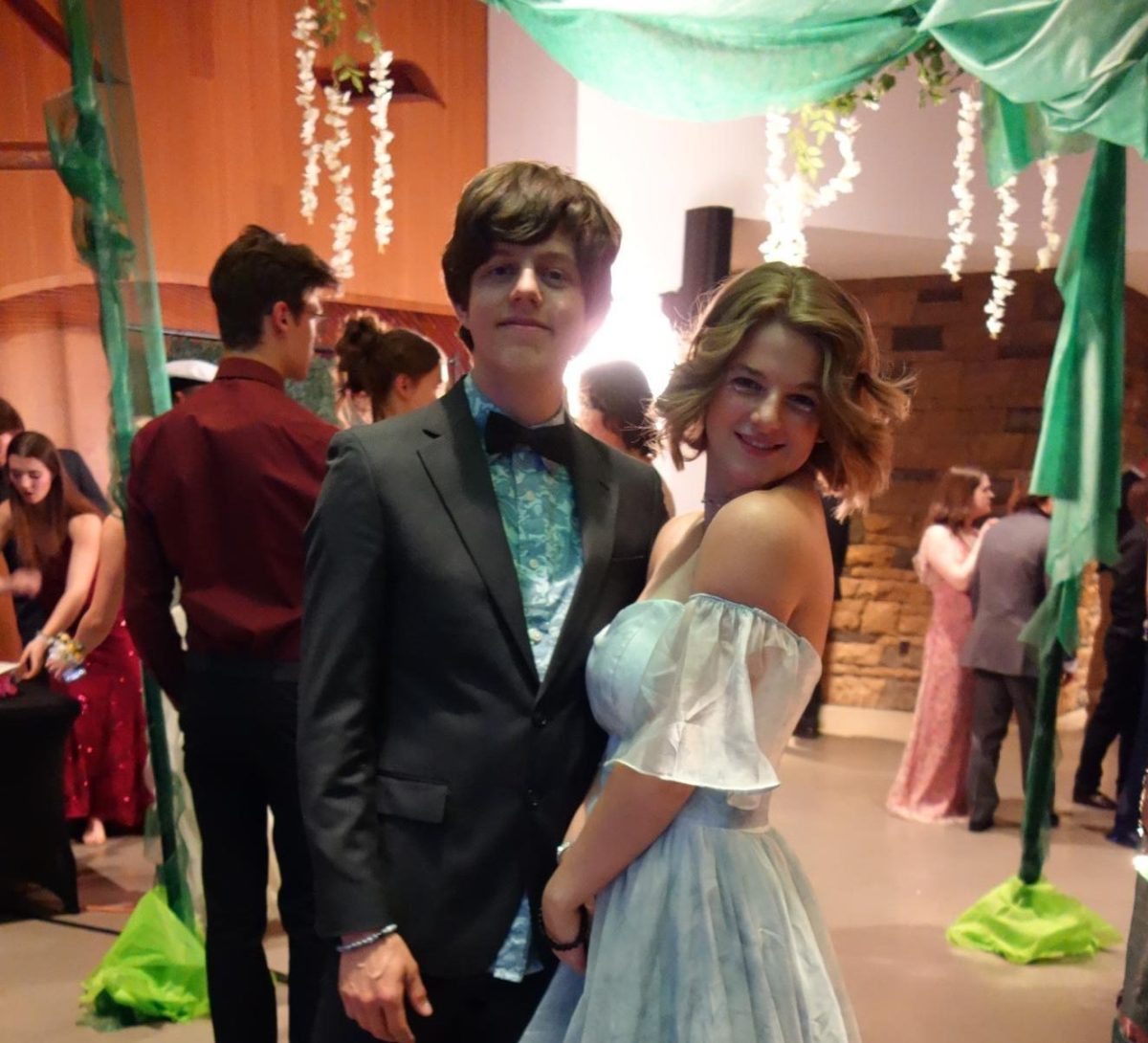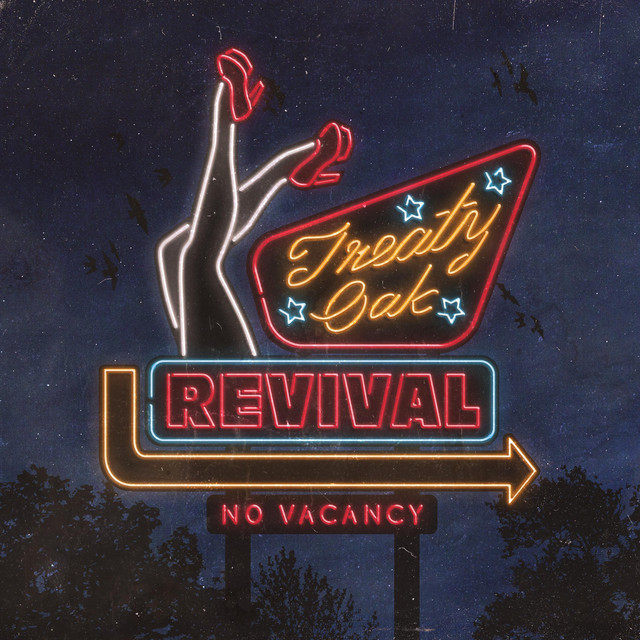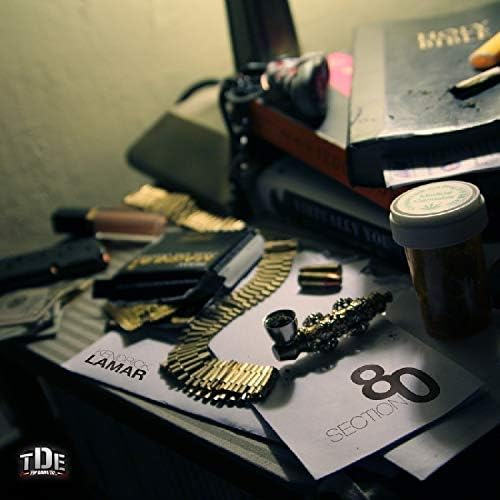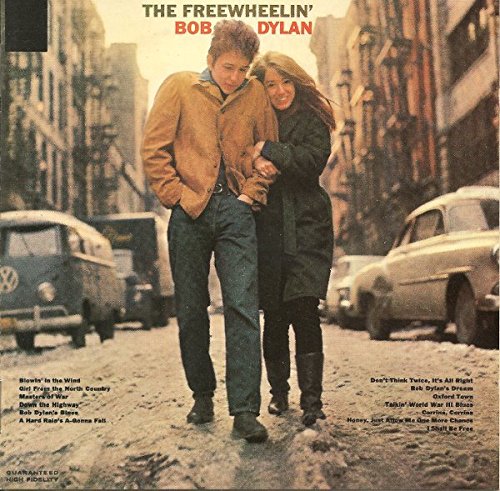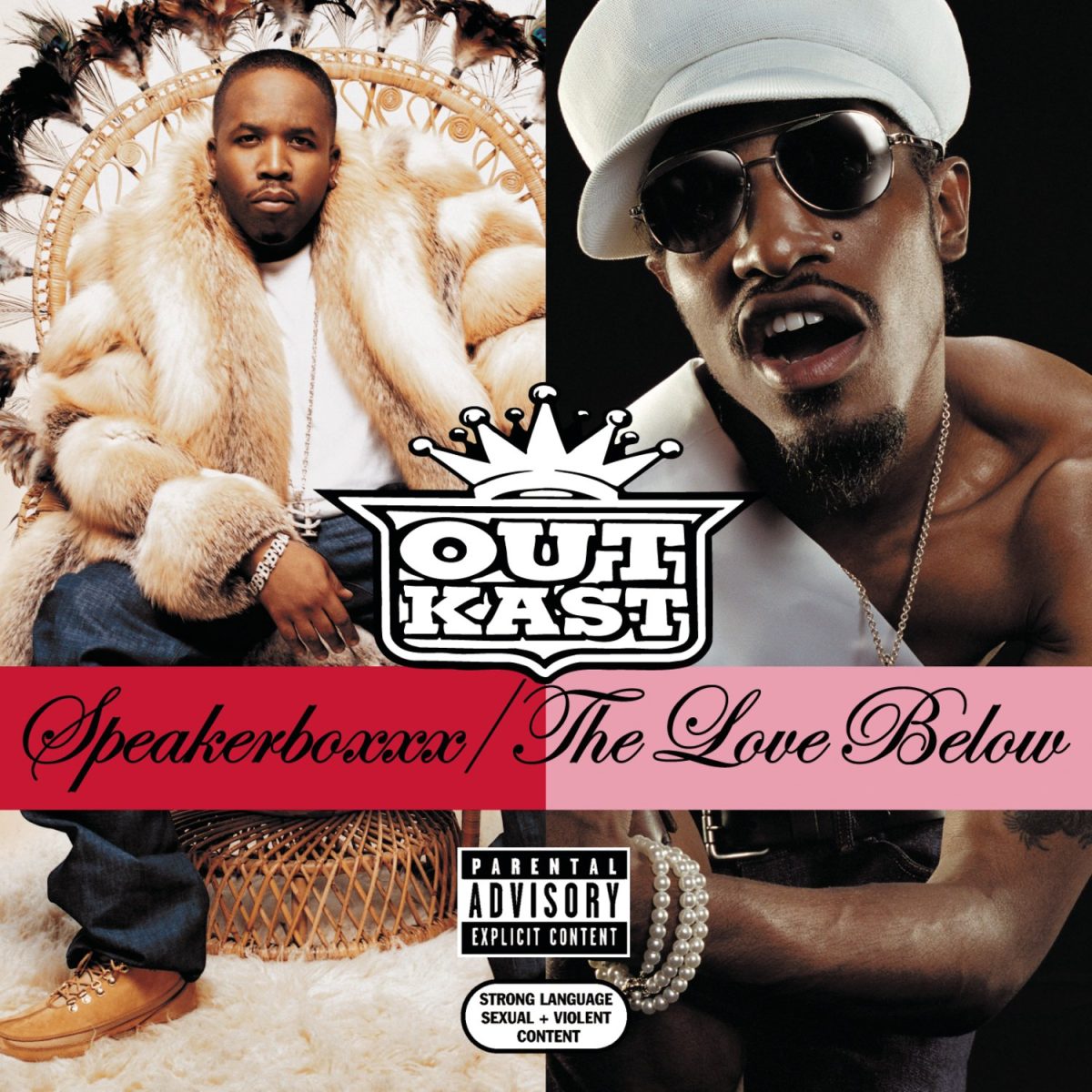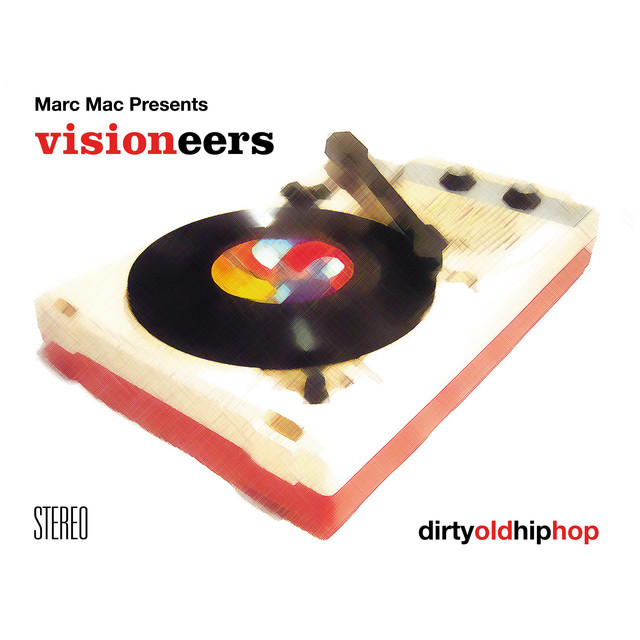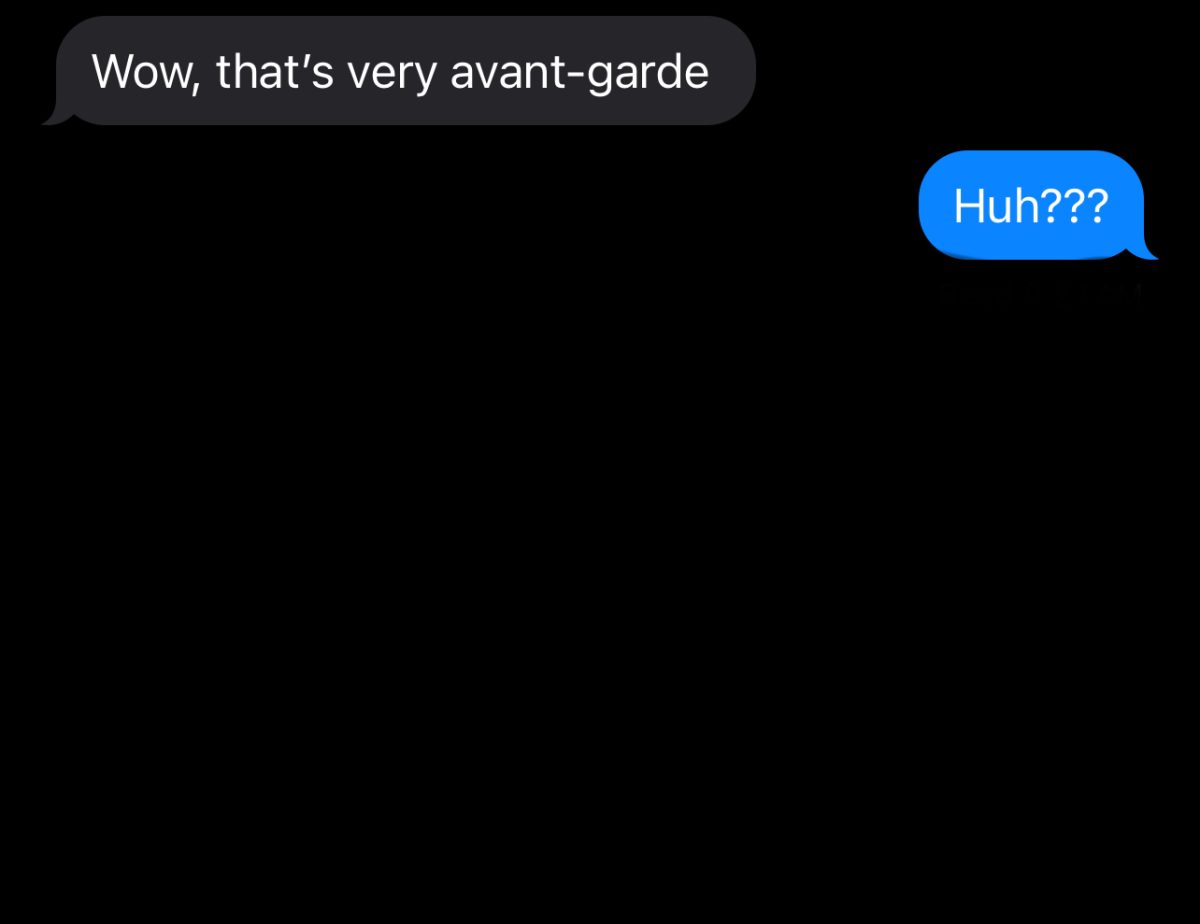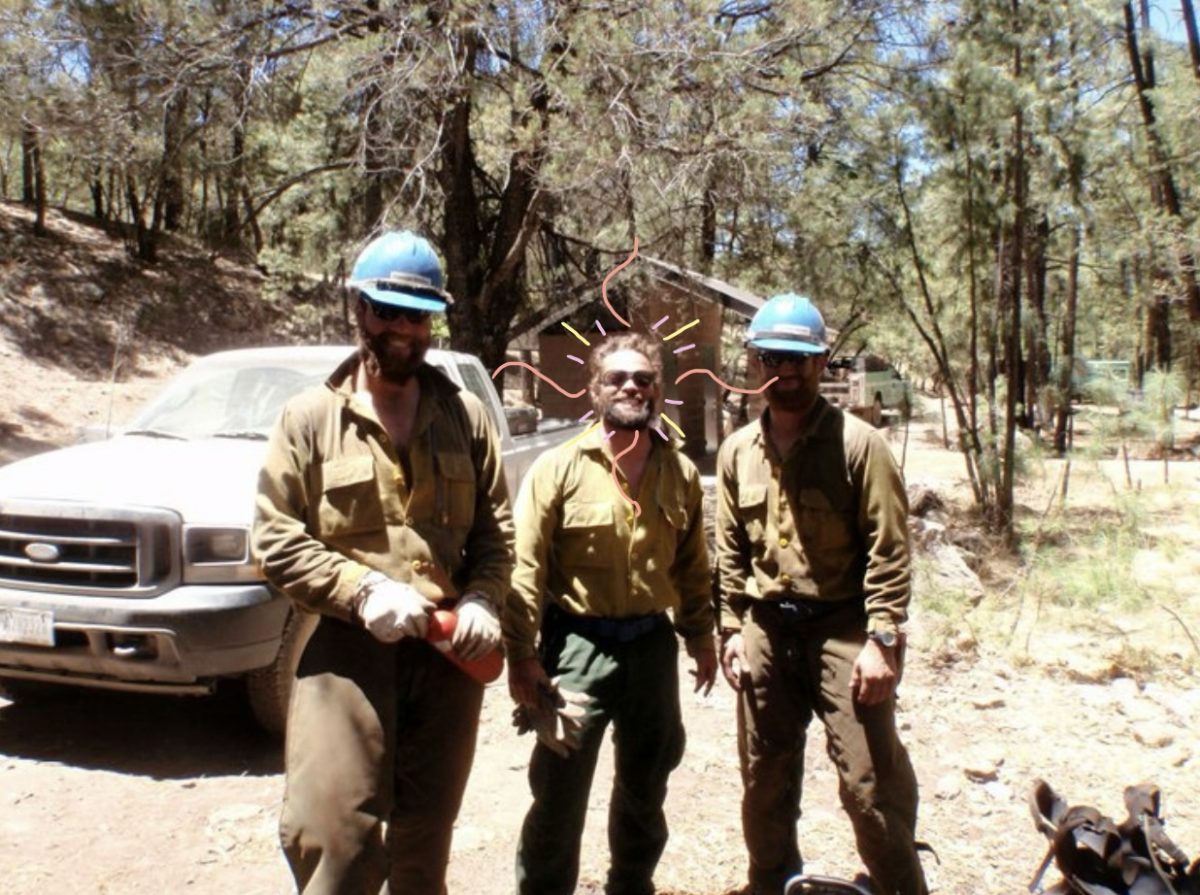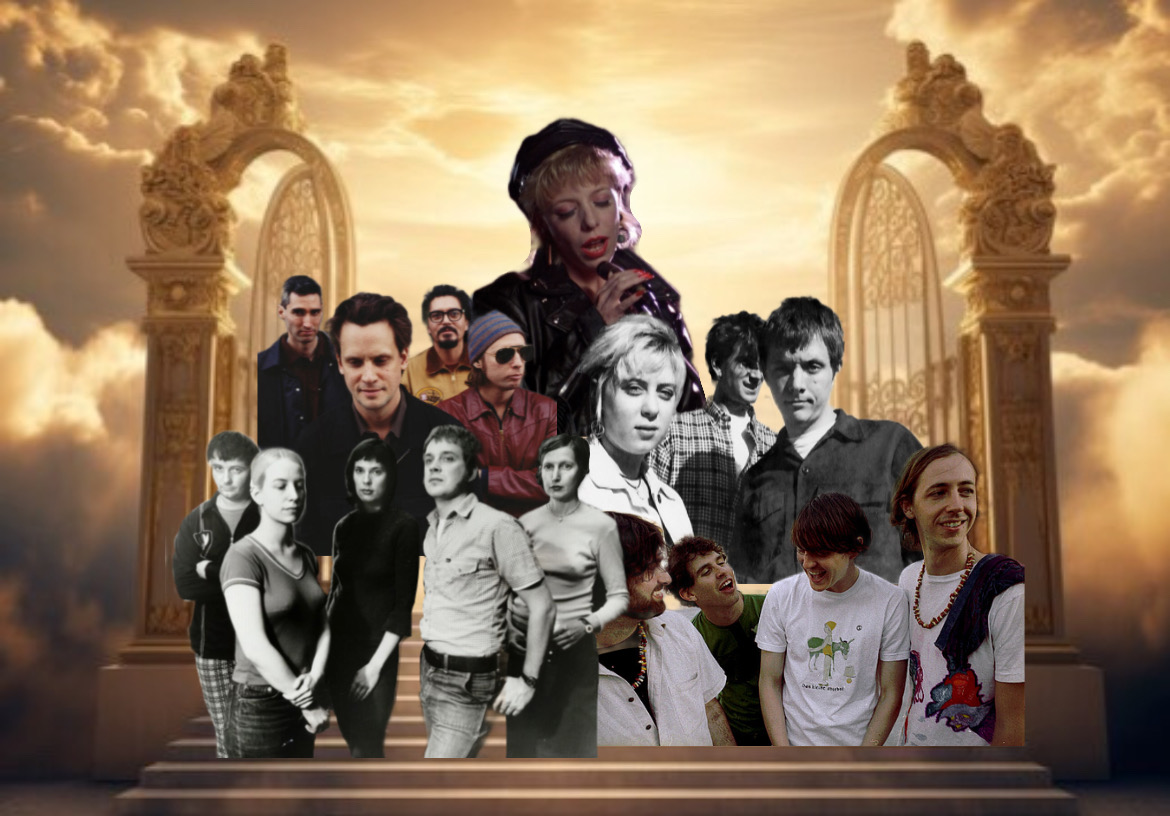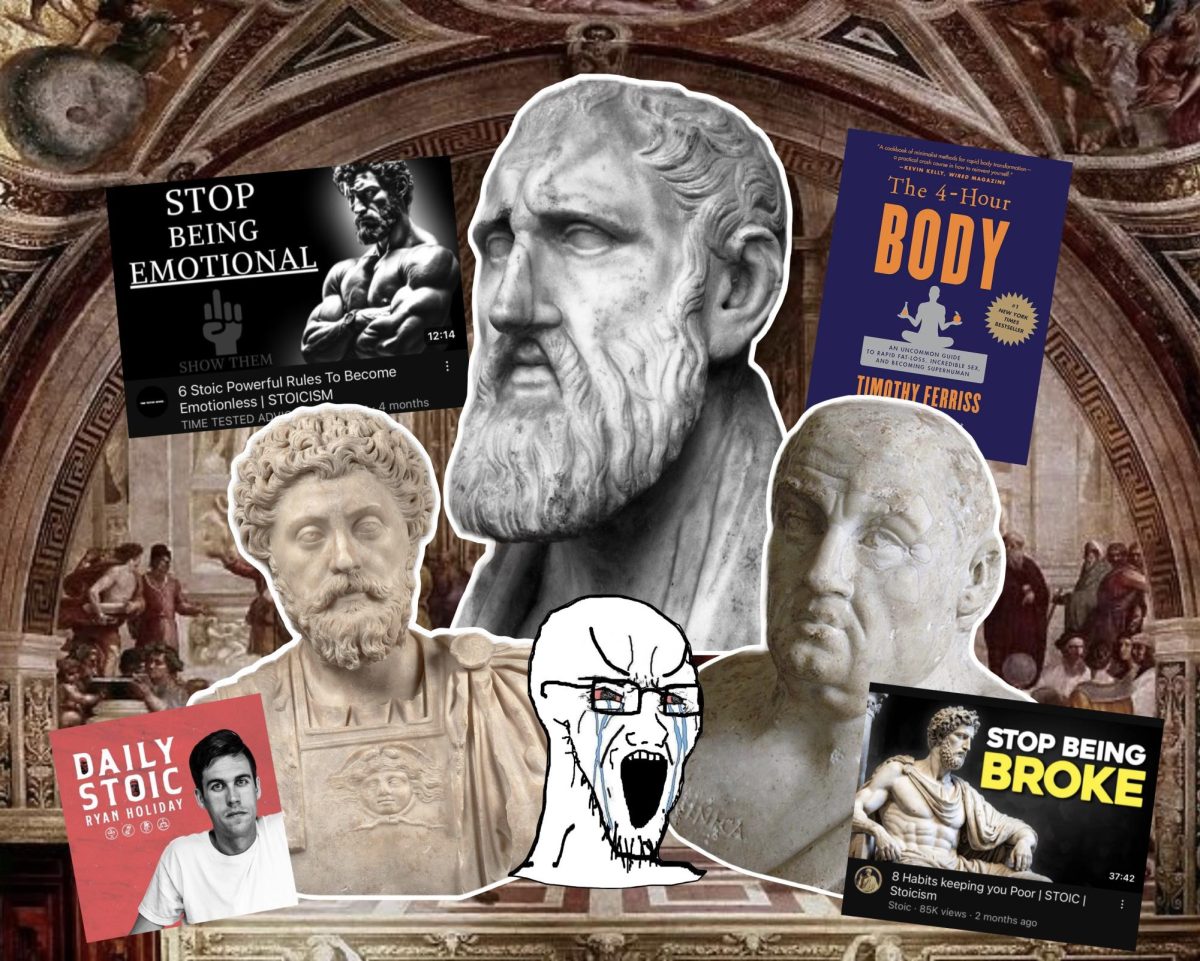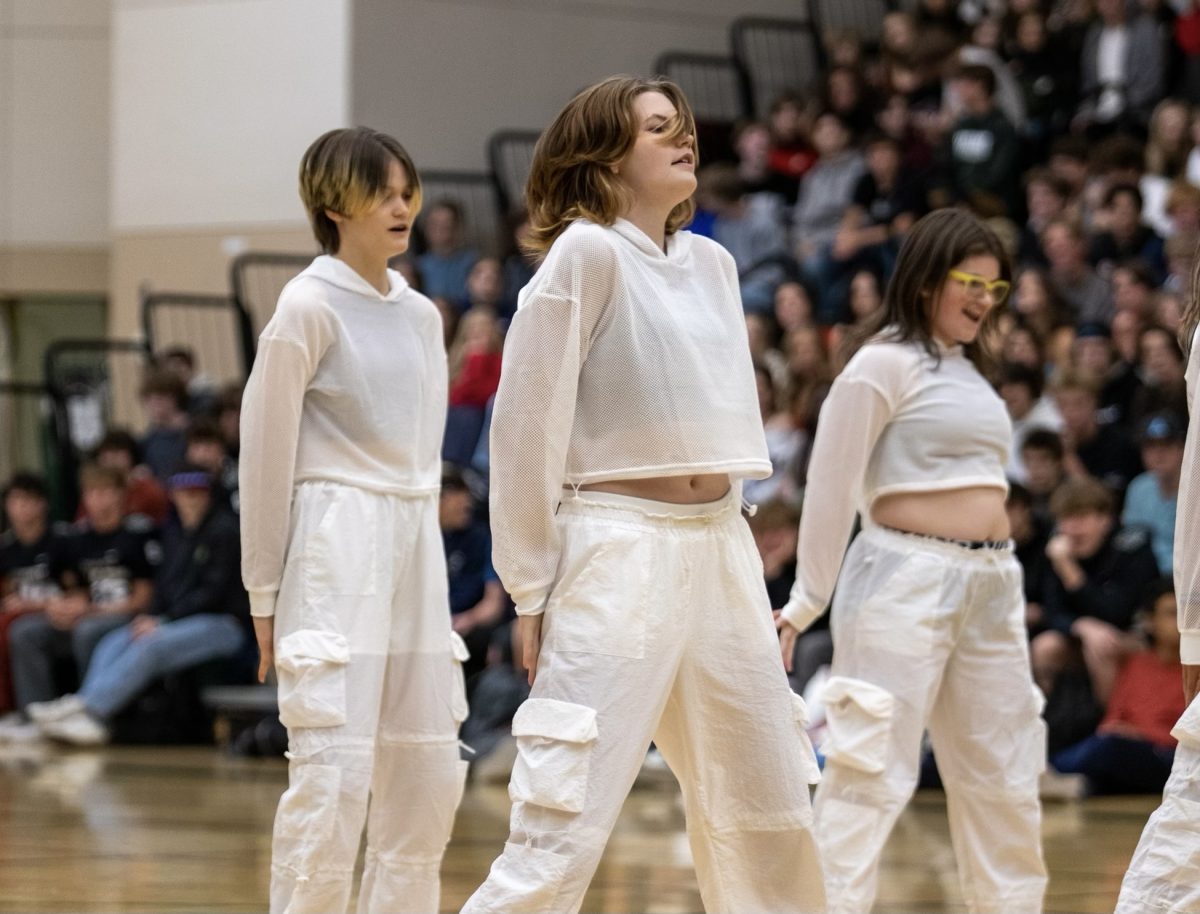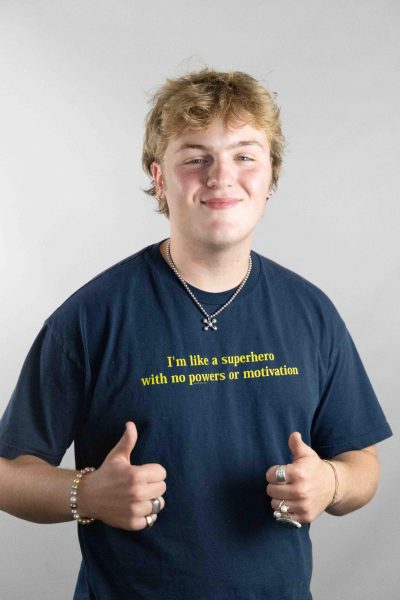Whether scrolling through a summary of Maison Margiela’s 2024 Artisanal Collection, or watching an “ending explained” video to your favorite Jordan Peele flick, you’ve more than likely heard of the term “avant-garde.” It’s easy to fly right past this word in a 15 minute youtube video-essay, but what does avant-garde even mean? Nothing a quick google search can’t fix, right? Wrong. Searching avant-garde gets you nothing but a wordy, confusing, unclear definition.
Once just a French military phrase meaning “advanced guard,” or the first people to encounter something on the battlefield, avant-garde has taken on a new, very confusing meaning. The Oxford English Dictionary defines avant-garde as “new and unusual or experimental ideas, especially in the arts, or the people introducing them.” This definition is fine, but it leaves a lot of the word open to interpretation. Who gets to decide what’s “new and unusual” and what’s just “same old same old?” If I wear a white shirt and jeans every day for a year, and suddenly wear a black shirt one day, is my outfit avant-garde? Is my outfit suddenly “new and unusual,” because I changed my uniform?
“Art is entirely subjective,” said Summit junior Kaspar Warnock. “To me, art is not always just the thing you’re looking at.” Art can have an array of different social or political impacts,often completely controlled by the artist, which is why avant-garde art was often met with heavy backlash and controversy in the early 19th century. Looking back today, the term’s early life cycle is a perfect demonstration of the way art in society evolves.
Take Edgar Degas’ 1880 sculpture La Petite Danseuse de Quatorze Ans, or Little Dancer Aged Fourteen. Today, looking at this piece, one wouldn’t think twice about it: it’s a beautiful, brutalist, hyper-realistic sculpture of a young dancer. However when the piece was originally created, it was described as a “threat to society” for its unusual style and uncommon subject, as dancers were looked down upon at the time.
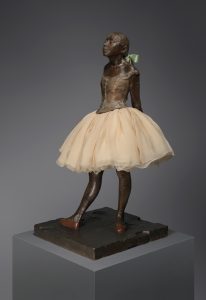
La Petite Danseuse de Quatorze Ans by Edgar Degas
This constant backlash and censorship sprouted a new meaning for avant-garde. It was no longer just a noun to describe art, it was a movement. Of course, we still use the word to describe art, but it is partially because of this movement that we see far-out, radical ideas today all over art.
Avant-garde exists on an imaginary spectrum, ranging from controversial to experimental. La Petite Danseuse de Quatorze Ans falls on the controversial end of this spectrum. On the other end of the spectrum, “The Ghost~pop Tape” by Devon Hendryx took everything you’d expect from a Hip-Hop oriented artist and turned it on its side. Hendryx, now better known as JPEGMAFIA, created what can only be described as an atmospheric, eccentric, pop-rap hybrid fever-dream. Full of distorted and repetitive vocal refrains, light and spacey drum patterns, psychedelic chord progressions and a literal five-and-a-half minute cover of Carly Rae Jepsen’s “Call Me Maybe,” Hendryx created a path for music never before seen, crossing lines and breaking boundaries. Similarly, “Enter the Void,” directed by Gaspar Noé, follows the dark and traumatic life of its main character, Oscar. Noé takes a literal new perspective on what’s possible with film. The entire film is shot in first person, peering in on Oscars point of view reflecting on the world as he dies. Psychedelic in nature, “Enter the Void” operates in almost one continuous shot, exploring the uncertainty of life after we die. Even the credits, which appear at the start of the film, are praised for their experimentation. Ignoring any lick of readability, the credits flash for just split seconds in bright neon colors, as harsh synth music plays. Noé treats “Enter the Void” not as a film, but as an experience, going against traditional rules of filmmaking— flashy, over-the-top, confusing, long— in order to give the viewer a look into his head.
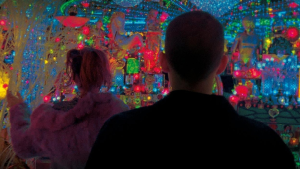
“Enter the Void” directed by Gaspar Noé
These examples are few of very, very many. Avant-garde as an art movement doesn’t have a recognizable start and end. Whether stemming from anti-establishment radical protests, or just simply an out-of-the-box idea or concept, avant-garde starts and ends with the artist. No amount of analyzing or criticism can deplete the ever-plentiful river of groundbreaking art the world has to offer.
Avant-garde is a soft spot, a place in between black and white, but not gray. “Art is up [to] interpretation for the viewer,” concludes Warnock. To be avant-garde is to know the rules, and break them. When someone says, “don’t mix this with that.” When someone explains that a certain structure must be used to make this thing work. When someone says those things and they are done anyways: that is avant-garde.









